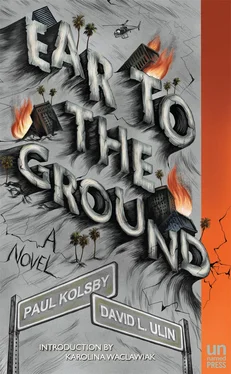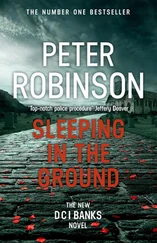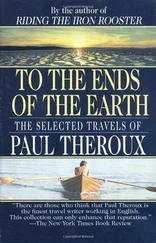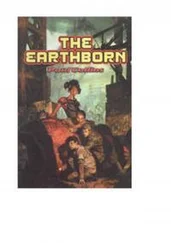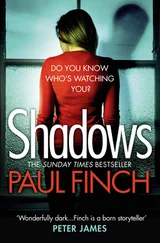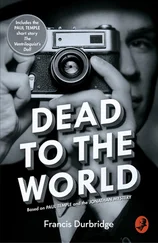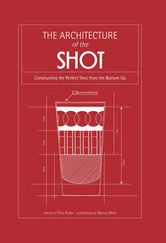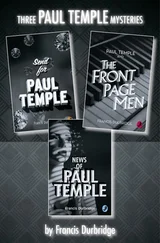Paul Kolsby, David L. Ulin
Ear to the Ground
For Erik Himmelsbach, who believed.
There is a certain comfort in knowing that although the Los Angeles landscape is always in flux—1920s art deco beauties morphing into 1960s atomic stucco apartments morphing into boxy glass condo monstrosities — the low-grade threat of an earthquake leveling all our architectural mistakes is ever present. In Ear to the Ground, which originally appeared as a serial in the Los Angeles Reader in the 1990s, David L. Ulin and Paul Kolsby put that threat and worry to good use. Capitalizing on potential catastrophe is a winning game in Hollywood, and in the hilarious Ear to the Ground, Ian, a struggling screenwriter who is reminiscent of many a struggling screenwriter in many a coffee shop in the Los Angeles Basin, wins the golden ticket of a million-dollar writing deal in the midst of The Big One’s imminent arrival. The novel is a commiseration on the excess of the 1990s, when screenwriters like Joe Eszterhaus were scoring multi-million dollar deals and directors like Michael Bay and Roland Emmerich were making their stamp on Hollywood with bombastic disaster films like Armageddon and Independence Day.
The 1990s also offers some of our most enduring cinematic visions of Los Angeles and Hollywood. The Coen Brothers’ masterpiece of a screenwriter’s Hollywood hell, Barton Fink, carried on a long tradition of Hollywood send-up novels like Budd Schulberg’s What Makes Sammy Run? and Nathanael West’s The Day of the Locust. These tales of terror are still handed out to eager film school students on their first day and provide more of an education about the wherewithal necessary for a spot on the lot. Necessary too, upon arrival to a Paramount-adjacent studio apartment, is a viewing of the quintessential Hollywood send-up, Swimming with Sharks. Working an agency desk for a week could surely get the first glimmers of anyone’s vengeful reverie going, even now. But the believers still keep coming, enduring humiliation and despair for a chance to grab the brass ring of fame. Ear to the Ground carries on the tradition of these acerbic Hollywood satires as starry-eyed earthquake specialists are caught in the web of disaster movie-making with excitable D-girls, alongside cameos from bad boy European super directors.
Like William Faulkner, Joan Didion and Bruce Wagner before them, writers have long been wading into Los Angeles’s literary waters, myself included. One has to deeply love the strange, lonely pulse of the hidden neighborhoods and haunted canyons and be on the right vibration to “get” Los Angeles and write about it with credibility. It’s a vibration I struggled to tap into over my years in Los Angeles, but I feel lucky to have found it — in all its peculiarity and sunny doom. There’s a reason writers flock here and a reason I couldn’t stay away (five years in New York was all I could muster): Los Angeles is a city of perpetual hope and chance, a 24/7 Vegas casino with a bright sun and glittering blue sky, and a place where reinvention is still an ever-present dream.
There’s an exciting nostalgia that wafts through Ear to the Ground —nestled between the moment Jerry Garcia died and O.J. Simpson’s trial for murder began — and though Ed Debevic’s and Damiano’s are gone from our grid, it’s nice to revisit a time when million dollar movie ideas were still being written down on bar napkins.
— Karolina Waclawiak
Ear to the Ground was originally published as a weekly serial novel in the Los Angeles Reader, beginning with Volume 17, Number 30, May 5, 1995 and ending with Volume 18, Number 17, February 2, 1996. An additional chapter not published in the Los Angeles Reader, “Charlie in Kobe,” appears here for the first time as an appendix. Minor inconsistencies in the narrative that occurred during the process of serialization have been left intact.
LOS ANGELES IS THE ONLY MAJOR CITY IN THE WORLD, thought Charlie Richter, heading east on Sunset in his red Rent-a-Corsica, where everybody has to drive. The May morning sun was a laser, confounding even the most creative extensions of his car’s visor, so he looked over at the bus to his right, moving along with him at eleven feet per minute. Its passengers seemed uniformly unhappy, and it occurred to him that Detroit had planned its L.A. marketing campaign carefully. Drive and you’ll be happier.
When traffic began moving freely, Charlie spilled his coffee to the tune of a drop at La Cienega, a splish at Fairfax, and a thwap at La Brea. He took a right — going south — determined to avoid left-hand turns of any kind. La Brea was straight and simple and easy to maneuver one-handed. The red light at Melrose introduced him to a pretty blonde, around thirty, alone in a spanking white Honda Accord, howling with laughter. She caught him noticing and lowered her passenger window. “Howard Stern,” she giggled.
“What?”
“On the radio. Howard Stern.”
The light turned green and he saw no more of her. Turning again, he made his way along Oakwood, past its stucco apartment buildings that appeared to have been shaped from a single mold. He noticed the cracks in their exteriors — at the corners usually, and extending diagonally and horizontally from the windows. Apparent also were the patch-jobs, where wet concrete had been slung as caulk and had discolored quickly.
Charlie pulled into a permit-only zone in front of 418 North Spaulding where, twelve minutes later, he received a thirty-five-dollar ticket. He was, meanwhile, scratching plaster from the house’s front wall with a Swiss Army knife and mixing it on the palm of his hand with a bluish liquid he squeezed from an eyedropper. Satisfied with his findings, he walked around to the north side of the building, looking for a way into the basement. He discovered a crawl space, which, with a shove of the grate, he easily entered.
Louis Navaro intended to rise early and wash his car in front of the building he owned. He had given the Santa Ana winds nearly two days to swirl their desert dust around his quarter-panels and work their insidiousness into his MacPherson struts. A bucket of hot water and a serious gob of Latho-Glaze would stun the demons, and force their retreat. It was his building; it was his car. The woman who’d left him seven years earlier had taken everything else — except for a duplex he’d converted from two vertically stacked apartments, blasting through the ceiling of the lower in a surge so libidinous he was convinced it was the sort of gesture to make her stay a lifetime.
He was wrong, of course, and after two years he moved into a smaller unit on the other side of the building, hoping the duplex would be easy to rent, in spite of its price: twenty-four hundred dollars, firm.
Currently, he lay in bed, staring at a tiny crack in the ceiling that resembled the depiction of a river on a map. He’d had a dream about a cruise boat that sailed, curiously, from Los Angeles to Chicago. The rest was pretty hazy, and no amount of recollection served him. So when at first there was a scraping sound beneath him, he didn’t notice. It persisted, however, and became a pop-pop, then a cack-cack, so Navaro got up. He jumped into some khakis and, zipping up his fly, went out the front door, and around to the side of the building.
Only Charlie’s feet and ankles were visible. Navaro, barefoot and barechested, took note of the exposed black leather uppers and the conservative-looking trouser cuffs. He paused for a moment before he heard from within the rap of metal on metal.
Читать дальше
